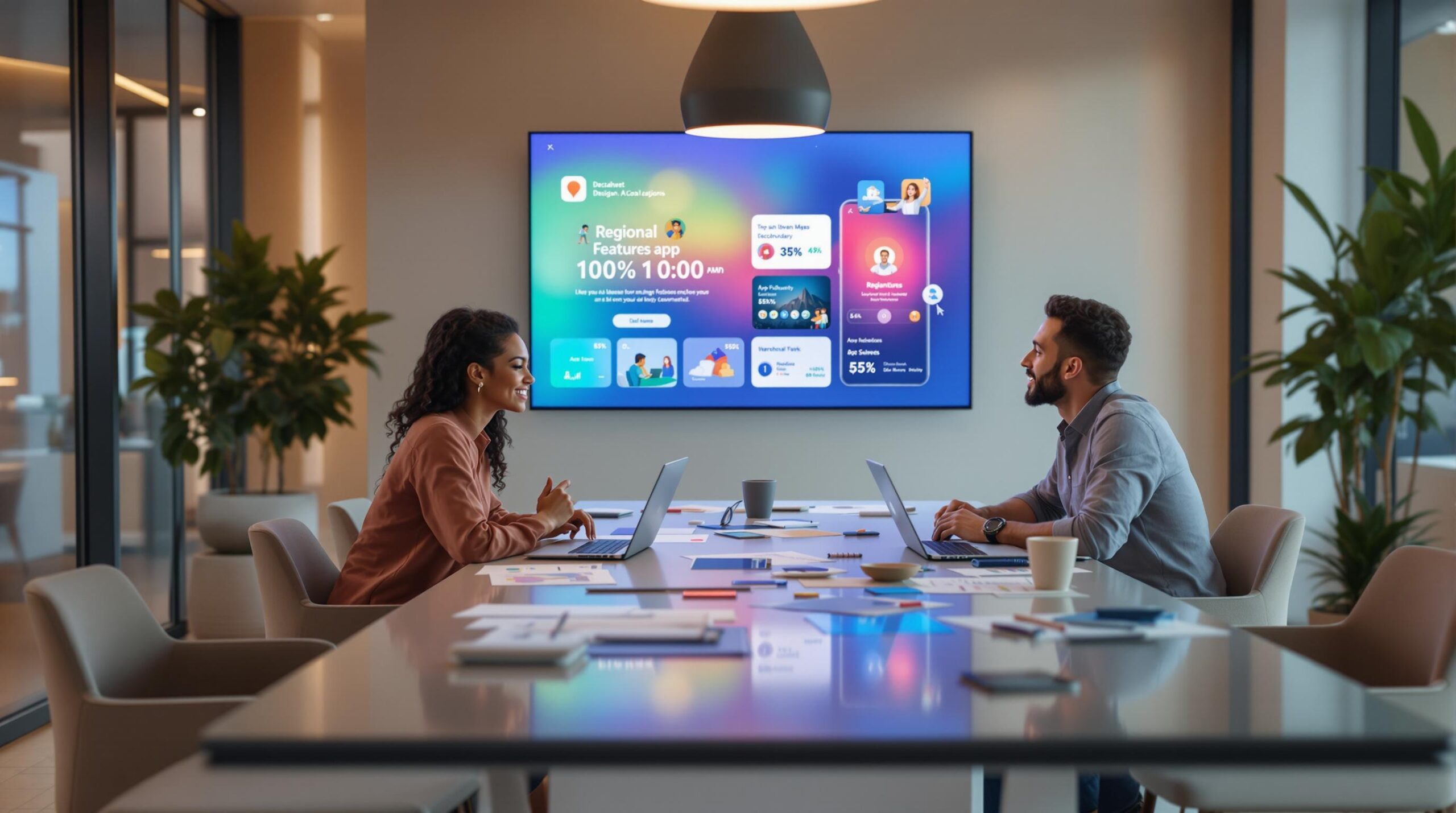
Want your app to succeed? Partnering with a local app development team could be the key. Here’s why:
- Local expertise matters: They understand your audience, regional regulations, and market trends.
- Better testing: Local teams can test apps on real devices, networks, and conditions for your area.
- Compliance made simple: They ensure your app meets local laws, especially for industries like healthcare.
- Tailored user experience: Local developers help adapt your app for cultural preferences, language, and payment systems.
- Smooth launches: With their knowledge, your app can stand out in local app stores and meet user expectations.
Local developers don’t just build apps – they make sure they work where it matters most: your market. From testing to launch, they help avoid costly mistakes and deliver apps that users love.
Test Localhost on Mobile and Make Available Online | Web …
Local Knowledge in App Development
Local partners play a key role in app success by offering in-depth regional market insights and technical expertise. This is especially important when creating healthcare and research applications that must comply with strict regulations.
Meeting Regional User Needs
Local developers understand the preferences and behaviors of regional audiences, which helps improve app adoption. With 3.5 billion smartphone users worldwide and fewer than 10% speaking English as their first language, localization is essential. A strong localization strategy can increase App Store downloads by 130% and boost revenue by 25%. Local teams adapt apps to cultural norms, adjust for device and network differences, use familiar navigation styles, and handle formats for dates, currencies, and measurements correctly.
"Because users in different markets, speaking different languages, will only use your app if it feels like it was designed for them." – Isabella Sterling, Kwintessential
Beyond user-friendly design, local experts also help navigate complex regional regulations.
Following Local Laws and Standards
Adhering to local laws is just as important as meeting user expectations. This is especially true for healthcare and research apps, where compliance is non-negotiable. Healthcare data breaches cost an average of $7.13 million, and HIPAA violations can lead to fines ranging from $100 to $50,000 per incident.
Local partners help ensure compliance by incorporating privacy-by-design principles, performing regular audits, and creating clear, regionally-compliant privacy policies.
"Healthcare app developers are the gatekeepers responsible for setting in place the safeguards that guarantee health-data protection. Securing your users’ personal information is non-negotiable in healthcare apps." – Foonkie Monkey
The numbers speak for themselves: in 2025, covered entities faced $137 million in penalties for HIPAA violations. This highlights the importance of working with partners who understand and can navigate local regulatory requirements.
Testing and Tuning for Local Markets
Testing Under Local Conditions
Testing your app under actual local conditions is essential for its success. With different devices and network setups across regions, testing on real networks and devices can uncover performance issues that might go unnoticed in controlled environments.
Local testing typically focuses on two main areas:
-
Network Performance Testing
Testing with various local carriers and under different network conditions (like 5G, 4G, and 3G) helps ensure your app performs well. This includes evaluating how it handles connectivity changes and peak traffic loads. -
Device Compatibility
Real devices are key for testing – emulators just can’t replicate hardware features accurately. This includes checking popular local device models, validating hardware like cameras and GPS, ensuring compatibility with different OS versions, and testing Bluetooth and IoT connections.
"By understanding how your application operates locally, you can ensure a smooth and enjoyable user experience for your global audience." – WeTest
These insights allow you to fine-tune your app to meet the specific needs of users in different regions.
Adapting Apps for Local Users
Once local testing is complete, the next step is tailoring your app to fit regional user preferences. This goes beyond translation – comprehensive localization testing ensures your app functions seamlessly in every region.
Here are two key areas to focus on:
-
Payment Systems Integration
Your app should support local payment methods, handle regional currencies, comply with financial regulations, and ensure smooth transaction flows. -
Cultural Optimization
Work with local experts to align your app with cultural norms. This includes using appropriate color schemes, symbols, and imagery, as well as region-specific UI patterns and local date/time formats.
| Localization Element | Testing Focus | Impact |
|---|---|---|
| Language | Context accuracy, UI fit | Avoids translation mistakes |
| Cultural Elements | Colors, symbols, imagery | Aligns with cultural norms |
| Technical | Device compatibility, network performance | Improves user experience |
| Regulatory | Privacy laws, data handling | Ensures legal compliance |
"Customers who respect and appreciate your brand are more prone to give you feedback…they know you care." – Paul Hoffman, Senior Content Manager, Applause
Local testing teams rely on specialized tools like automated frameworks, real device labs, and detailed test scenarios based on local user behavior to ensure your app is fully verified and ready for market.
sbb-itb-7af2948
Advanced Technology Integration
Incorporating technologies like 3D scanning and IoT requires local expertise in both hardware and user needs. This ensures that advanced features are tailored to regional conditions and user expectations.
3D Scanning and AR Implementation
Accurate 3D scanning can significantly improve app performance when backed by thorough local testing. For example, iOS 3D scanning achieves precision levels better than 1.5mm. This accuracy is vital for industries like healthcare, retail, and professional services.
Key factors to consider for effective 3D scanning include:
- Lighting Conditions: Testing under local lighting ensures scans remain accurate, with consistent illumination being crucial.
- Distance Settings: Scanning parameters must be adjusted for typical usage scenarios.
- Hardware Calibration: Devices with LiDAR sensors need fine-tuning for specific models used in the region.
A great example is the HP Arize app, designed for American clinicians to create custom plantar orthosis. This iPad-based app not only speeds up treatment but also maintains high precision. Similarly, the iBrace body scanner showcases how detailed 3D rendering can transform the production of custom orthotics in clinical environments.
Bluetooth Mesh and IoT Setup
Bluetooth mesh networking plays a key role in smart building and industrial applications. Local developers are essential for ensuring these networks function smoothly in specific environments.
| Implementation Aspect | Key Considerations | Local Impact |
|---|---|---|
| Network Architecture | Many-to-many communication | Tailored to local building layouts |
| Device Management | Provisioning and configuration | Simplified for regional installers |
| Power Efficiency | BLE periodic small packets | Longer battery life in local settings |
To achieve seamless IoT integration, development teams focus on:
- Network Design: Building drag-and-drop interfaces for easy device grouping and management.
- Mobile Accessibility: Creating user-friendly apps and templates suited to local needs for on-site setup.
"Bluetooth mesh networking is quickly being adopted as the wireless communications platform of choice in a number of control systems, including advanced lighting solutions for the smart building and smart industry markets." – Bluetooth SIG
Launch Support and Market Entry
Launching an app successfully requires a deep understanding of the local market and ongoing support. Partnering with local development experts is key to navigating regional needs and ensuring your app performs at its best.
App Store Setup for Local Markets
To maximize visibility and adoption in regional app stores, you need strategies tailored to each market. Local partners are instrumental in making your app stand out in crowded marketplaces by using targeted, region-specific approaches.
| Aspect | Local Partner Role | Impact |
|---|---|---|
| Keyword Research | Identify search terms specific to the region | Increases visibility |
| Content Localization | Adapt app descriptions and visuals | Enhances user understanding |
| Cultural Adaptation | Adjust visuals and messaging | Boosts engagement |
| Compliance Review | Ensure alignment with local regulations | Speeds up approval process |
These partners help you adapt app names, descriptions, and promotional materials so they resonate with the audience in each region. This process ensures compliance with marketplace rules while maintaining your brand identity.
"Before an investment in a complete mobile app localization effort, start with localizing the app name, keywords and screenshot fields available for each new targeted country." – David Quinn, VP of Strategy & Partnerships at Gummicube, Inc.
Once your app is optimized for app stores, the next step is to maintain momentum with strong post-launch support.
Post-Launch Updates and Support
After a tailored launch, ongoing local support is critical to keeping your app competitive. Local development partners play a key role in maintaining performance and ensuring user satisfaction through a range of support strategies.
Key components of post-launch support include:
- Monitoring app performance in real time
- Collecting and analyzing user feedback
- Identifying and fixing bugs
- Rolling out security updates
- Adding new features
- Ensuring compatibility with platform updates
- Keeping up with market trends
"Consider the feedback of the app users as one of the most important steps to take after the application launch. You can directly ask the early adopters for their thoughts on the app and any improvements they would like to see in terms of specific functionality and the overall user interface." – Ksusha, Product Growth at AppstoreSpy
Conclusion: Choosing the Right Local Development Partner
Working with a local app development partner can improve every stage of your app’s journey, from initial testing to its final launch. Their knowledge and skills play a key role in ensuring your app succeeds.
Key Takeaways
Partnering locally offers distinct benefits:
| Advantage | Benefit |
|---|---|
| Time Zone Alignment | Enables real-time collaboration during business hours, speeding up issue resolution |
| Cultural Insight | Ensures apps connect with local users and align with regional preferences |
| Regulatory Knowledge | Guarantees compliance with local data laws and industry standards |
| In-Person Collaboration | Facilitates clearer communication for addressing complex features |
| Infrastructure Expertise | Optimizes app performance within the local digital environment |
These benefits are especially important when building apps with advanced features like 3D scanning or handling complex healthcare solutions.
From thorough testing to personalized post-launch support, a local partner can address challenges and deliver tailored solutions. This is particularly evident in the healthcare sector, where mobile medical apps are expanding rapidly.
"With a local developer, you gain a partner who understands your community, your business, and your vision. That’s something worth investing in." – daboigbae, Author
For projects requiring high performance or sensitive data handling, local developers bring a unique advantage. They ensure secure data management, intuitive user interfaces, and seamless prototype transitions into enterprise-grade applications. By combining technical know-how with local market expertise, they help create apps that meet industry standards, engage users, and remain compliant with regulations.
Related posts
- Choosing the Right Mobile App Development Partner for Canadian Healthcare Projects
- Why Smart Product Manufacturers Shouldn’t Build Their Own Mobile Apps
- Local Matters: Why Your Smart Device App Needs a Partner Who Can Test With Your Hardware
- Your Hardware Is Smart – Don’t Let a Bad App Ruin the Experience

